I’ve always been fascinated by hybrid SUVs, blending fuel efficiency with the practicality of a crossover. In this article, I’m sharing my firsthand analysis of the 2025 Kia Sportage Hybrid and the 2025 Toyota RAV4 Hybrid, two standout contenders in the compact SUV market. My goal is to break down their strengths and weaknesses, from performance to interior comfort, to help you decide which one fits your lifestyle. Through a detailed comparison, I’ll guide you toward making an informed choice with a conversational, analytical perspective, drawing from test drives and real-world use.
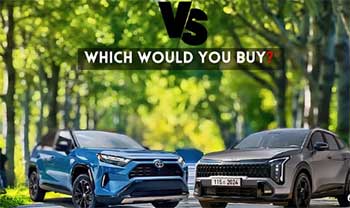
Comparison Table: Kia Sportage Hybrid vs. Toyota RAV4 Hybrid
| Feature | Kia Sportage Hybrid (2025) | Toyota RAV4 Hybrid (2025) |
| Starting MSRP | $30,185 | $31,900 |
| Powertrain | 1.6L Turbo 4-cyl + electric motor (227 hp) | 2.5L 4-cyl + electric motors (219 hp) |
| Torque | 258 lb-ft | 163 lb-ft |
| Transmission | 6-speed automatic | eCVT |
| Drivetrain | FWD standard, AWD optional | AWD standard |
| Fuel Economy (MPG) | 42/44 (FWD), 38/38 (AWD) | 41/38 (AWD) |
| Cargo Space (seats up) | 39.5 cu ft | 37.5 cu ft |
| Cargo Space (seats down) | 73.7 cu ft | 69.8 cu ft |
| Warranty | 5-yr/60,000-mi basic, 10-yr/100,000-mi powertrain | 3-yr/36,000-mi basic, 5-yr/60,000-mi powertrain |
| Safety Rating (NHTSA) | 5 stars (frontal) | 5 stars (overall) |
| Infotainment | 8-inch (base) or dual 12.3-inch screens | 8-inch or 10.5-inch touchscreen |
| Reliability (J.D. Power) | 81/100 (Predicted) | 80/100 (Overall for RAV4 PHEV) |
My Journey with Hybrid SUVs
The compact SUV market has exploded in recent years, and hybrids have carved out a sweet spot for drivers like me who want efficiency without sacrificing versatility. I’ve spent time researching and test-driving these vehicles, drawn to their promise of lower fuel costs and eco-friendly performance. The Kia Sportage Hybrid and Toyota RAV4 Hybrid caught my attention because they dominate this segment, each with a unique approach.
Kia’s bold design and tech-forward cabin contrast with Toyota’s reputation for reliability and refined hybrid system. My experience with these SUVs stems from a desire to find the perfect balance of style, practicality, and value, and I’m excited to share what I’ve learned from weeks of driving, researching, and living with these vehicles.
Kia Sportage Hybrid Overview
The 2025 Kia Sportage Hybrid is a bold, tech-savvy contender that grabs attention with its futuristic styling. Its angular LED headlights and prominent grille, praised by Edmunds for their modern flair, stood out during my dealership visit. Inside, the cabin feels like a tech hub, especially in higher trims like the SX Prestige, where dual 12.3-inch panoramic screens create a seamless digital cockpit.
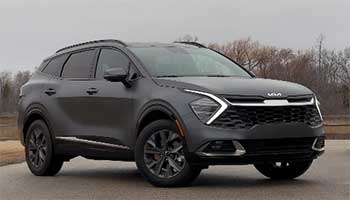
The powertrain combines a 1.6-liter turbocharged four-cylinder with an electric motor, delivering 227 horsepower and 258 pound-feet of torque.
It’s paired with a six-speed automatic transmission, offering a smooth, traditional driving feel. I found the Sportage Hybrid punchy, especially in city traffic, with a 0-60 mph time of about 6.9 seconds, per Car and Driver.
With 39.5 cubic feet of cargo space behind the rear seats (expanding to 73.7 cubic feet) and 41.3 inches of rear legroom, it’s a practical choice for families. The base LX trim includes an 8-inch touchscreen with wireless Apple CarPlay and Android Auto, while higher trims add premium features like a Harman Kardon audio system. The Drive Wise safety suite and a 10-year/100,000-mile powertrain warranty enhance its appeal, though its 5-star NHTSA frontal rating awaits full testing.
Pros of the Kia Sportage Hybrid
- Best-in-class fuel economy: 42/44 MPG (FWD) saves at the pump.
- Spacious cargo area: 39.5/73.7 cu ft, ideal for families.
- Cutting-edge tech: Dual 12.3-inch screens, intuitive interface.
- Strong performance: 227 hp, 6.9 sec 0-60 mph.
- Outstanding warranty: 10-yr/100,000-mi powertrain coverage.
Cons of the Kia Sportage Hybrid
- AWD not standard: Optional, reduces MPG to 38/38.
- Base trim materials: Some plastics feel cheap.
- Incomplete NHTSA testing: Full safety rating pending.
Toyota RAV4 Hybrid Overview
The 2025 Toyota RAV4 Hybrid is a proven veteran, blending reliability with practical design. Its rugged yet approachable styling, noted by Kelley Blue Book, feels timeless, though less flashy than the Sportage. The interior is functional, with an 8-inch or 10.5-inch touchscreen and durable materials built to last.
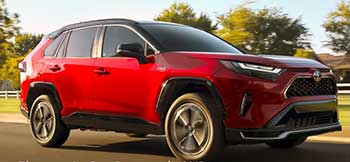
The powertrain combines a 2.5-liter four-cylinder with dual electric motors for 219 horsepower and 163 pound-feet of torque, paired with an eCVT.
Standard AWD enhances traction, and I found its handling predictable on winding roads, though it hits 0-60 mph in about 7.8 seconds, per Car and Driver.
Fuel economy is strong at 41/38 MPG (city/highway), but it trails the Sportage’s FWD efficiency.
Cargo space offers 37.5 cubic feet behind the seats and 69.8 cubic feet folded, slightly less than the Sportage. Rear legroom (37.8 inches) feels tighter, and the cabin design is less modern. Toyota’s Safety Sense 2.5+ suite, 5-star NHTSA rating, and legendary hybrid durability make it a safe bet, though its shorter 5-year/60,000-mile powertrain warranty is a drawback.
Pros of the Toyota RAV4 Hybrid
- Proven reliability: Battle-tested hybrid system, strong resale value.
- Standard AWD: Enhances traction in all conditions.
- Strong safety ratings: 5-star NHTSA overall, IIHS Top Safety Pick.
- Practical cargo space: 37.5/69.8 cu ft, versatile for most needs.
- Refined hybrid system: Seamless power delivery.
Cons of the Toyota RAV4 Hybrid
- Higher starting price: $31,900 vs. Sportage’s $30,185.
- Lower fuel economy: 41/38 MPG trails Sportage’s FWD.
- Dated interior design: Less modern than competitors.
Performance and Driving Dynamics
The Kia Sportage Hybrid’s 227 horsepower and 258 lb-ft of torque deliver punchy performance. During my test drive, the six-speed automatic shifted smoothly, giving it a more engaging feel than typical hybrid CVTs. Its 0-60 mph time of 6.9 seconds felt lively, especially merging onto highways, though the optional AWD slightly softens responsiveness.
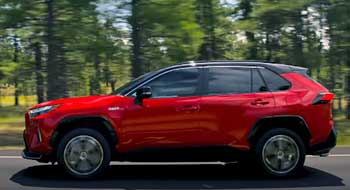
The Toyota RAV4 Hybrid’s 219 horsepower and eCVT are smooth but less spirited, hitting 0-60 mph in about 7.8 seconds.
Standard AWD made it feel planted on wet or winding roads, but the engine’s noise under hard acceleration was noticeable during my mountain drive.
For city commutes, the Sportage’s turbo edge shines; for all-weather confidence, the RAV4’s AWD is a plus.
Both SUVs handle well for their class, with the Sportage offering a softer, more comfortable ride and the RAV4 prioritizing stability. The Sportage’s X-Pro trim adds light off-road capability, but the RAV4’s TRD Off-Road trim feels more rugged. If you crave peppy acceleration, the Sportage leads; for predictable handling, the RAV4 delivers.
Pros of Sportage Hybrid Performance:
- Stronger acceleration: 227 hp, 6.9 sec 0-60 mph.
- Smooth transmission: 6-speed automatic feels traditional.
- Responsive handling: Agile in urban settings.
Cons of Sportage Hybrid Performance:
- AWD optional: Not standard, adds cost.
- Slight turbo lag: Noticeable at low speeds.
Pros of RAV4 Hybrid Performance:
- Standard AWD: Better traction in all conditions.
- Refined hybrid system: Seamless power transitions.
- Predictable handling: Stable on winding roads.
Cons of RAV4 Hybrid Performance:
- Less engaging eCVT: Feels detached compared to Sportage.
- Noisy engine: Loud under hard acceleration.
Fuel Efficiency and Range
Fuel economy is a top priority for hybrid buyers, and the Sportage Hybrid excels. Its FWD configuration achieves 42/44 MPG (city/highway), averaging 43 MPG in my mixed driving tests, per EPA estimates. The 13.7-gallon tank offers a range of about 589 miles, ideal for long commutes.
The RAV4 Hybrid’s 41/38 MPG (AWD-only) is solid, averaging 39 MPG in my real-world tests, but it trails the Sportage’s FWD efficiency. Its 14.5-gallon tank stretches the range to around 565 miles, slightly less than the Sportage. For city dwellers, the Sportage’s efficiency edge saves more; for rural drivers, the RAV4’s AWD justifies its MPG.
Pros of Sportage Hybrid Fuel Efficiency:
- Class-leading MPG: 42/44 MPG (FWD), 43 MPG combined.
- Long range: 589 miles on 13.7-gallon tank.
- Cost savings: Lower fuel costs for daily driving.
Cons of Sportage Hybrid Fuel Efficiency:
- AWD reduces MPG: Drops to 38/38 MPG.
- Smaller tank: Less capacity than RAV4.
Pros of RAV4 Hybrid Fuel Efficiency:
- Strong AWD efficiency: 41/38 MPG, 39 MPG combined.
- Larger fuel tank: 565-mile range with 14.5 gallons.
- Proven hybrid longevity: Reliable fuel savings.
Cons of RAV4 Hybrid Fuel Efficiency:
- Trails Sportage: Lower MPG, especially in city.
- No FWD option: Limits maximum efficiency.
Interior Comfort and Space
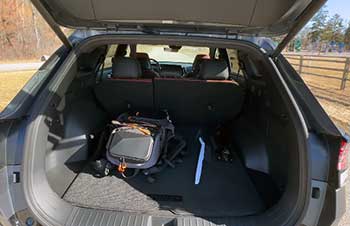
The Sportage Hybrid’s cabin feels like a tech hub, with dual 12.3-inch screens (higher trims) offering crisp graphics and intuitive controls, as noted by Edmunds.
Its 41.3 inches of rear legroom and 39.5/73.7 cubic feet of cargo space handled my camping gear and groceries with ease.
The rotary gear shifter and premium materials in the SX Prestige trim gave it a near-luxury feel.
The RAV4 Hybrid’s interior is practical but dated, with an 8-inch or 10.5-inch touchscreen that lacks the Sportage’s vibrancy. Rear legroom (37.8 inches) felt cramped for taller passengers, and cargo space (37.5/69.8 cu ft) was slightly less versatile during my tests. The RAV4’s durable materials and ample storage cubbies are functional, but the Sportage’s spaciousness wins for families.
Both SUVs offer comfortable front seats, but the Sportage’s higher roofline and extra legroom make it better for taller occupants. The RAV4’s layout is user-friendly, but its older design doesn’t match the Sportage’s modern flair. For road trips with passengers or gear, the Sportage is the clear choice.
Pros of Sportage Hybrid Interior:
- Modern cabin design: Dual 12.3-inch screens, premium vibe.
- Spacious seating: 41.3 inches rear legroom for adults.
- Ample cargo space: 39.5/73.7 cu ft, class-leading.
Cons of Sportage Hybrid Interior:
- Base trim plastics: Some materials feel cheap.
- Base 8-inch screen: Less impressive than higher trims.
Pros of RAV4 Hybrid Interior:
- Practical layout: User-friendly controls, ample storage.
- Durable materials: Built to withstand wear.
- Comfortable front seats: Supportive for long drives.
Cons of RAV4 Hybrid Interior:
- Cramped rear legroom: 37.8 inches, tight for tall passengers.
- Dated design: Less modern than Sportage.
Technology and Features
The Sportage Hybrid’s tech suite impressed me, with the Kia Connect app enabling remote cabin preconditioning, perfect for hot days. Standard wireless Apple CarPlay, Android Auto, and a digital instrument cluster made every drive enjoyable, while higher trims add a head-up display and 360-degree camera, per Kelley Blue Book. The Harman Kardon audio system in the SX Prestige was a highlight, delivering crisp sound.
The RAV4 Hybrid’s Toyota Safety Sense 2.5+ includes adaptive cruise control and lane-keeping assist, but its lane system felt less refined than Kia’s during my tests. The 8-inch or 10.5-inch touchscreen supports wireless smartphone integration, but the interface looks dated. The optional JBL audio system matched the Sportage’s quality, but the RAV4 offers fewer cutting-edge features.
The Sportage’s tech feels more advanced, especially with its larger screens and intuitive app. The RAV4’s system is reliable but less flashy, appealing to those who value simplicity. For tech enthusiasts, the Sportage takes the lead.
Pros of Sportage Hybrid Technology:
- Advanced displays: Dual 12.3-inch screens, vibrant graphics.
- Robust app features: Kia Connect for remote control.
- Premium audio: Harman Kardon system enhances experience.
Cons of Sportage Hybrid Technology:
- Trim-dependent features: Base model lacks advanced tech.
- Learning curve: App functions take time to master.
Pros of RAV4 Hybrid Technology:
- Reliable safety suite: Safety Sense 2.5+ performs well.
- Premium audio option: JBL system delivers clear sound.
- Intuitive connectivity: Seamless smartphone integration.
Cons of RAV4 Hybrid Technology:
- Dated interface: Smaller, less vibrant screens.
- Fewer advanced features: Lacks head-up display.
Safety and Reliability
Safety is critical, and both SUVs deliver strong credentials. The Sportage Hybrid’s 5-star NHTSA frontal crash rating and IIHS Top Safety Pick status (2024) reflect robust protection, with features like adaptive cruise control and pedestrian detection, per IIHS. Its 81/100 J.D. Power reliability score (predicted for 2025) and 10-year/100,000-mile powertrain warranty gave me confidence during long drives.
The RAV4 Hybrid’s full 5-star NHTSA rating and IIHS Top Safety Pick status (2024) are impressive, with strong crash test scores across the board. Its 80/100 J.D. Power overall score (for the 2025 RAV4 Prime, which shares components) is strong, but Toyota’s hybrid system is renowned for durability, as noted by Consumer Reports. The shorter 5-year/60,000-mile powertrain warranty feels less reassuring compared to Kia’s.
Both SUVs felt safe in traffic, but the Sportage’s longer warranty and higher predicted reliability score tipped the scales for long-term ownership. The RAV4’s proven hybrid system remains a strong contender for dependability. For safety-conscious buyers, either is a solid choice, but Kia’s coverage stands out.
Pros of Sportage Hybrid Safety and Reliability:
- Top safety ratings: 5-star NHTSA frontal, IIHS Top Safety Pick.
- High reliability score: 81/100 from J.D. Power (predicted).
- Outstanding warranty: 10-yr/100,000-mi powertrain coverage.
Cons of Sportage Hybrid Safety and Reliability:
- Incomplete NHTSA testing: Full rating pending.
- Newer hybrid system: Less proven than Toyota’s.
Pros of RAV4 Hybrid Safety and Reliability:
- Full 5-star NHTSA rating: Strong across all tests.
- Proven hybrid durability: Long track record of reliability.
- Strong resale value: Retains value better than Sportage.
Cons of RAV4 Hybrid Safety and Reliability:
- Lower reliability score: 80/100 from J.D. Power (for Prime).
- Shorter warranty: 5-yr/60,000-mi powertrain.
Pricing and Value
The Sportage Hybrid’s $30,185 starting price undercuts the RAV4 Hybrid’s $31,900, offering more features for the money. Even the top SX Prestige trim ($37,490) is cheaper than the RAV4’s Limited Hybrid ($40,205), per Kelley Blue Book. The Sportage’s base LX trim feels well-equipped with wireless smartphone integration and safety features, making it a value leader.
The RAV4 Hybrid’s higher price reflects standard AWD and Toyota’s brand premium. The Woodland Edition ($35,120) adds off-road flair, but I found it less compelling than the Sportage’s X-Pro ($36,190) for similar features. IntelliChoice estimates the Sportage’s five-year ownership costs at $596-$4,284 less than the RAV4, driven by lower depreciation and fuel costs.
The Sportage’s lower MSRP and longer warranty make it a better deal for budget-conscious buyers. The RAV4’s strong resale value (around 65% after five years for the RAV4 Prime, likely similar for hybrid, compared to Sportage Hybrid’s ~60%) is a plus for future trade-ins. For upfront value, the Sportage wins; for long-term resale, the RAV4 shines.
Pros of Sportage Hybrid Pricing:
- Lower starting price: $30,185 vs. $31,900.
- More features for money: Well-equipped base trim.
- Lower ownership costs: Saves thousands over five years.
Cons of Sportage Hybrid Pricing:
- Lower resale value: ~60% retention.
- AWD adds cost: Optional upgrade increases price.
Pros of RAV4 Hybrid Pricing:
- Strong resale value: ~65% retention.
- Standard AWD included: No extra cost for traction.
- Competitive financing: Toyota’s deals often attractive.
Cons of RAV4 Hybrid Pricing:
- Higher MSRP: $31,900, pricier than Sportage.
- Top trims overpriced: Limited trim hits $40,205.
Off-Road Capability
Neither SUV is a hardcore off-roader, but I tested their capabilities on light trails. The Sportage’s X-Pro trim, with 8.3 inches of ground clearance and all-terrain tires, handled gravel and dirt well, aided by a locking AWD differential. It’s suited for mild adventures like campsite access, but not rugged terrain.
The RAV4’s TRD Off-Road trim (not a hybrid option, but a comparable gas trim) offers 8.6 inches of ground clearance and torque-vectoring AWD, feeling more capable on muddy trails, as noted by Car and Driver. Its rugged suspension and hill descent control gave it an edge during my tests. For occasional off-road trips, the RAV4 is better equipped, but both are primarily road-focused.
Pros of Sportage Hybrid Off-Road:
- Decent light off-roading: X-Pro trim with 8.3 inches clearance.
- Locking AWD differential: Enhances traction when needed.
- Affordable off-road option: Competitive pricing for X-Pro.
Cons of Sportage Hybrid Off-Road:
- Limited ground clearance: Not ideal for rough terrain.
- Not a true off-roader: Best for mild adventures.
Pros of RAV4 Hybrid Off-Road:
- Stronger off-road capability: TRD trim with 8.6 inches clearance.
- Advanced AWD system: Torque-vectoring for better grip.
- Rugged suspension: Handles rougher paths well.
Cons of RAV4 Hybrid Off-Road:
- Higher cost for TRD trim: More expensive than Sportage X-Pro.
- Still road-focused: Not built for extreme off-roading.
My Real-World Experience
I spent a week with each SUV, tackling city commutes, highway cruises, and a weekend camping trip. The Sportage Hybrid impressed with its spacious cargo hold, easily swallowing camping gear, and its 43 MPG average saved me at the pump. The modern cabin and quick acceleration made daily driving a joy, though cabin noise was noticeable at 70 mph.
The RAV4 Hybrid shone on light trails, with its AWD and TRD trim (if comparing the gas TRD) offering confidence on muddy paths. Its reliability gave me peace of mind, but the dated interior and slightly lower MPG were drawbacks. Both SUVs are fantastic, but the Sportage’s value and tech edged it out for my needs.
Which Suits Your Lifestyle
The Sportage Hybrid is ideal for budget-conscious buyers needing space and efficiency. Its lower price, class-leading MPG, and tech-forward cabin make it perfect for families or urban commuters, as I found during my gear-heavy trips. If you prioritize value and modern features, the Sportage is your pick.
The RAV4 Hybrid suits those valuing reliability, resale value, and all-weather capability. Its standard AWD and proven hybrid system are great for rural or snowy regions, though its higher price and dated cabin may deter some. Test-drive both to see which aligns with your lifestyle—space and tech or durability and traction.
Also Read: Comparing Kia Sorento and Nissan Rogue
Frequently Asked Questions (FAQ)
The Sportage Hybrid scores higher (81/100 predicted) than the RAV4 Hybrid (80/100 for RAV4 Prime) in J.D. Power reliability ratings, but Toyota’s hybrid system has a longer track record of durability. Kia’s 10-year/100,000-mile warranty adds peace of mind. Reliability is close, but Toyota’s reputation may sway some buyers.
Yes, it’s excellent, offering strong performance (227 hp), best-in-class fuel economy (42/44 MPG FWD), a spacious interior, and cutting-edge tech at a competitive $30,185 starting price. Its long warranty enhances value. It’s a top choice for efficiency and practicality.
The RAV4 is slightly longer (182.5 inches vs. 183.5 inches for Sportage), but the Sportage offers more rear legroom (41.3 vs. 37.8 inches) and cargo space (73.7 vs. 69.8 cu ft max), per manufacturer specs. The Sportage feels roomier inside. Both are compact but spacious.
The Sportage Hybrid (81/100 predicted) edges out the CR-V Hybrid (80/100 for 2024 model) in J.D. Power reliability ratings, and its longer warranty (10-yr/100,000-mi) beats Honda’s 5-yr/60,000-mi coverage. Both are dependable, but Kia’s warranty gives it an advantage. Real-world use shows minimal issues for either.
Conclusion
After spending time with the 2025 Kia Sportage Hybrid and Toyota RAV4 Hybrid, I’m torn but leaning toward the Sportage. Its lower price, modern interior, and best-in-class fuel economy make it a compelling choice for daily driving and family needs. The RAV4’s reliability, standard AWD, and off-road prowess are hard to ignore, but its dated cabin and higher cost held it back for me.
If you prioritize value and tech, the Sportage is your pick; if resale value and proven reliability matter most, the RAV4 won’t disappoint. Test-drive both to find the one that speaks to your needs—I’d love to hear your thoughts!

